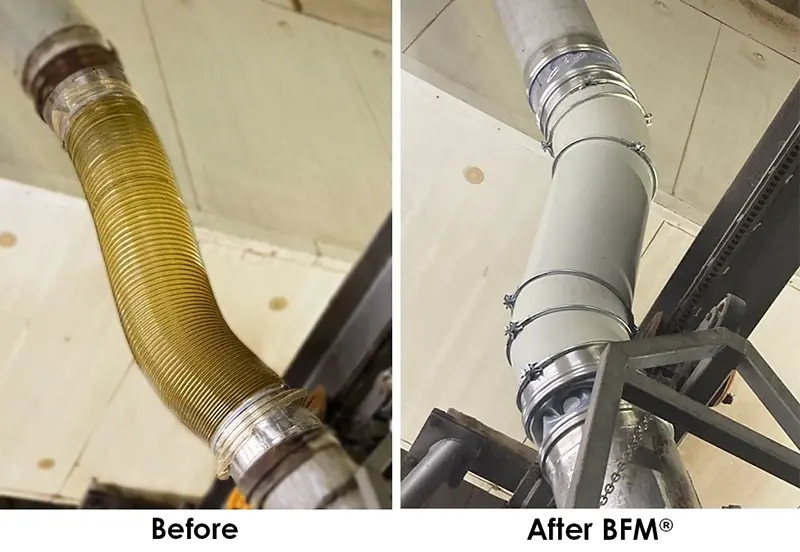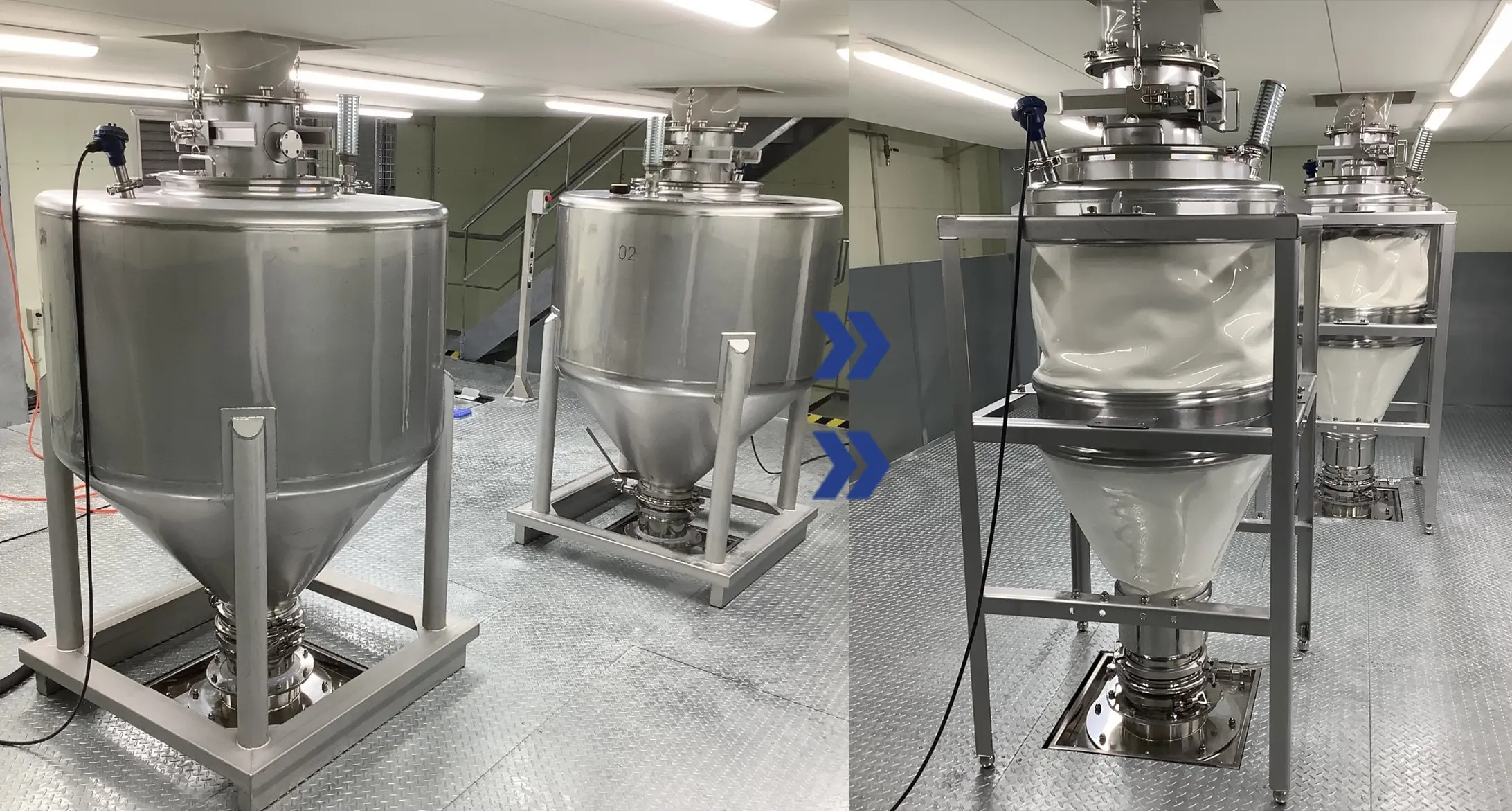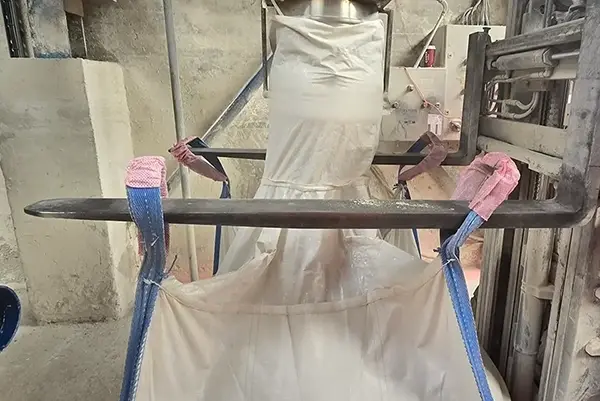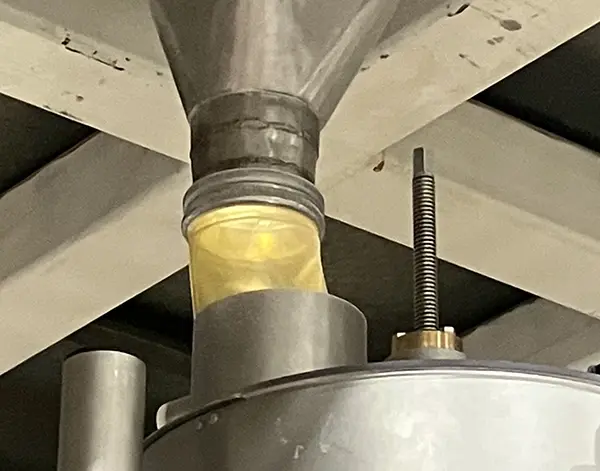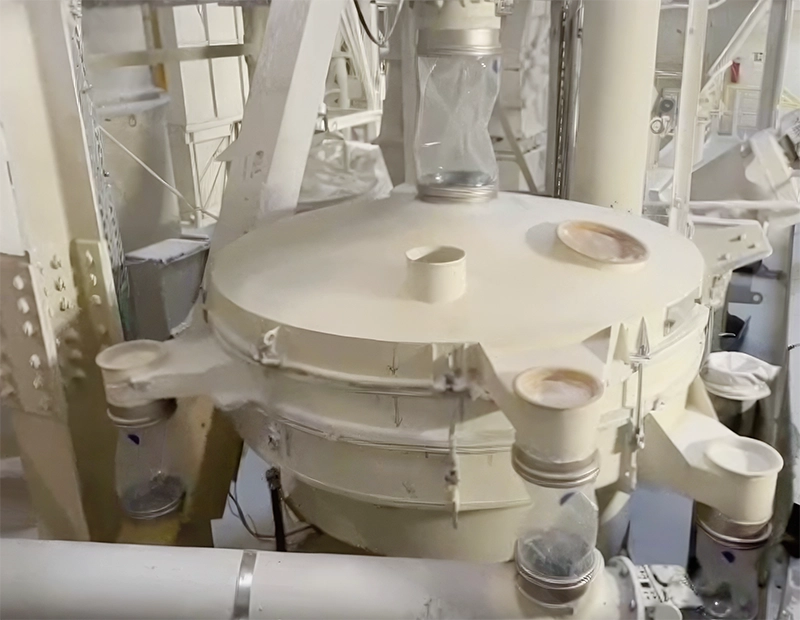Waste is a global issue, and today we all recognize the importance of working towards ‘zero-waste’ by reducing, reusing and recycling wherever we can. A surprising and often-under-reported waste issue is food, with around 30 per cent of the global food supply lost or wasted each year, according to the United Nations’ Environmental Program. 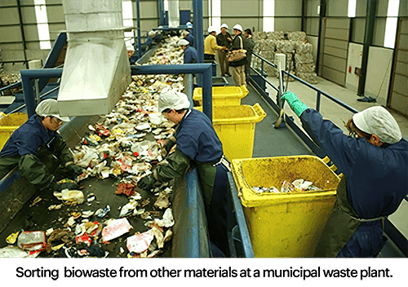 To reduce the sheer volume of organic waste going to landfills, many local authorities around the world are investing significantly in biowaste recycling plants.
To reduce the sheer volume of organic waste going to landfills, many local authorities around the world are investing significantly in biowaste recycling plants.
In these facilities, biowaste (plant and animal material) is separated from general municipal waste and used to produce biogas, a renewable source of energy, and biomatter, used for fertilizer.
The recycling process involves crushing the organic waste and mixing it with water, producing a sort of sludge. This sludge is then broken down by bacteria in an oxygen-free environment, a process known as anaerobic digestion.
An anaerobic digester is essentially a large fermentation tank where the sludge ferments for between 10 – 30 days, creating ‘biogas’, primarily a blend of methane and carbon dioxide.
With little to no processing, this resultant biogas can be used for combined heat and power (CHP) operations, or simply turned into electricity using a combustion engine, fuel cell, or gas turbine.
Outdoor setting presents challenges for processing equipment
Large-scale biogas plants that require large fermentation and storage tanks mean that much of the ancillary processing equipment is also located outdoors, so they are exposed to considerable environmental stresses. Facility and maintenance managers in these plants need to ensure their processes can operate efficiently even with constant exposure to UV rays, temperature fluctuations and the effects of wind and rain.
One of the most common pieces of equipment to be located outdoors are separators, such as sieves or filter presses, which are used in one of the last steps of the biowaste processing process. Once the biogas has been harvested from the anaerobic digestor, the solids in the fermented sludge must be separated from the liquid to enable purification of the liquid and drying of the solids (or ‘digestate’) for use as fertilizer. 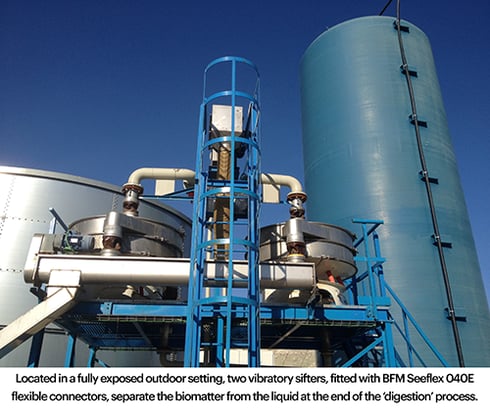 One such large biogas processing plant in Spain (shown right), uses vibrating sieves to separate the biomass solids from the liquids at the end of the biogas production process.
One such large biogas processing plant in Spain (shown right), uses vibrating sieves to separate the biomass solids from the liquids at the end of the biogas production process.
Traditional clamped connectors failing on exposed sieves
In this particular installation, flexible connectors are used between the inlet and outlets of the sieves, but the vibration of the sieves presented challenges for standard clamped flexible connectors.
Because they were attached to the outside of the pipes, the clamps were unable to prevent seepage of the liquid component during the separation process. They also did not last long in the exposed outdoor setting.
The maintenance staff needed strong, resilient flexible connections that could both withstand the exposure to the elements and contain the liquid component of the separated waste without leaking under vibration.
To solve this challenging issue, local BFM® fitting distributor, Masanes Servindustria SA, recommended installing BFM® fittings on the two outdoor sieves. Each sieve has one inlet for the sludge and two outlets - one for the liquid and the other for the solids.
Challenging conditions no problem for BFM® fitting connectors
Outdoor conditions can be harsh on any flexible plastic material, which is one of the reasons the material chosen was BFM® Seeflex 040E, a particularly strong, flexible, ether-based urethane exclusive to BFM® fitting.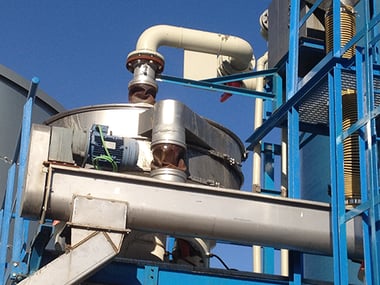 Seeflex 040E has been proven for outdoor use in both sun and water exposure. Although extended exposure to UV can turn the connectors a little yellow, the Seelfex 040E material still retains its high strength and flexibility.
Seeflex 040E has been proven for outdoor use in both sun and water exposure. Although extended exposure to UV can turn the connectors a little yellow, the Seelfex 040E material still retains its high strength and flexibility.
The design of the BFM® fitting system ensures there are no leaks because the connector is snap-fitted on the inside of specially shaped spigots welded to the connecting equipment.
Even with the vibratory movement of the sieve, and the location being outdoors with no protection, the BFM® fitting connector system has continued working perfectly at the plant for many years, eliminating leakage and keeping the plant and machinery as clean as new.
If you need help with an outdoor or sieving application, contact us.
